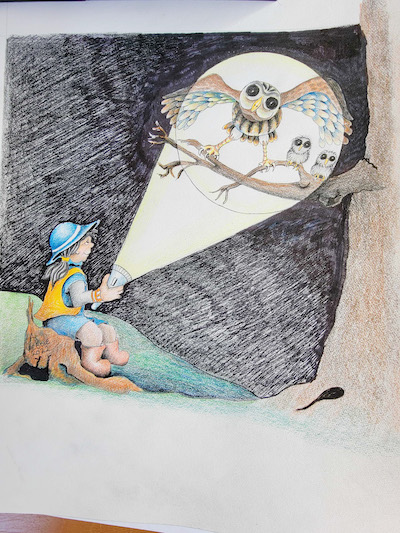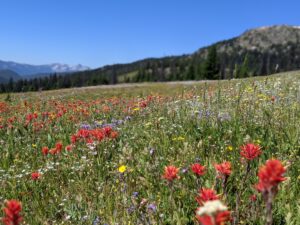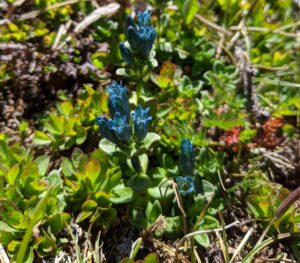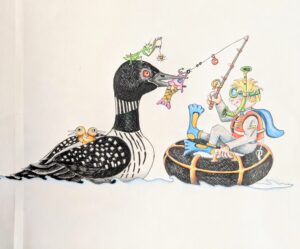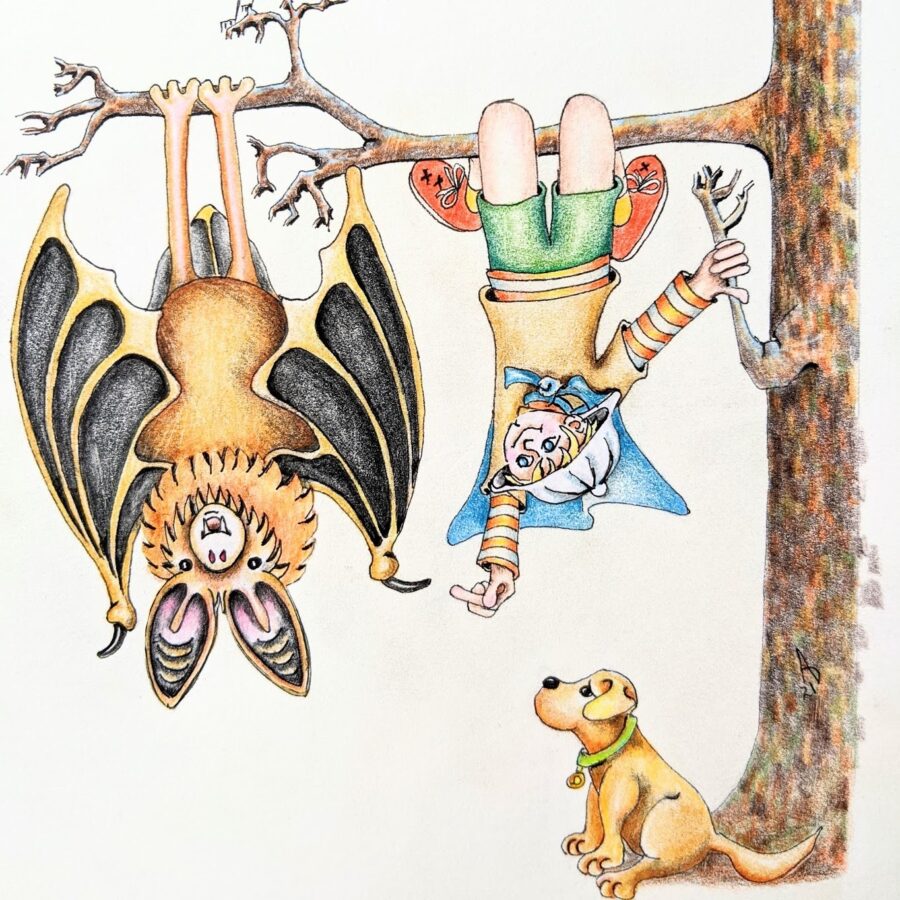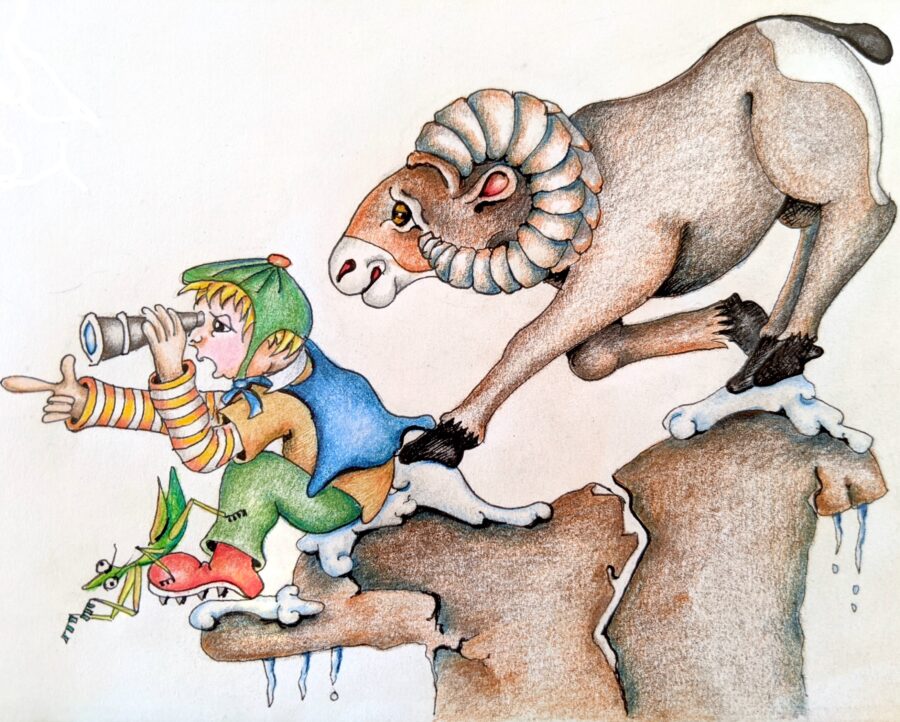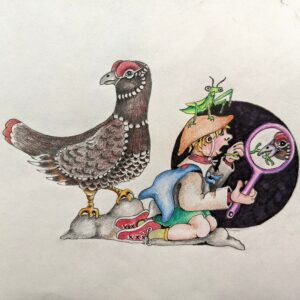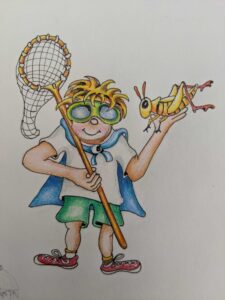with Lynda Mapes of The Seattle Times
In this interview-style episode, Lynda Mapes of The Seattle Times joins OHA in discussing her newest book, Orcas: Shared Waters, Shared Home. From Tonasket to the Salish Sea, our ecosystems are connected by the water and the wildlife that travels through our region. Learn about salmon, orcas, and the people whose lives revolve around the aquatic habitats of Washington on Spotify, Apple Podcasts, Google Podcasts or wherever you normally listen!

Anna, Nature Detective, dreaming of the rivers that connect with the sea. Illustration by Diana Weddle
Anna surfaces briefly, then glides back underwater, swimming against the current. It is a fast current, and the cold, clear water feels just right against her red sides, her glinting scales. She is headed upstream, back to the place she was born.
As she makes her way upstream, away from the ocean, she is thinks back to the last time she was in fresh water. Anna barely remembers that trip downstream four years ago, she was so small! As she swam from the river to the sea, the waters gradually got saltier. She knew she had arrived in the sea because the water moved differently – in and out and in swirls, pushing every which-way. She had to get used to that salt, the currents, and the new animals and plants she swam past, and there was no time to dilly dally.
There was lots of food to eat in the sea, but there were also lots of creatures that wanted to eat Anna and her salmon friends! She found her way out to the deep water, where she could hide from the big barking sea lions and the huge bald eagles that pounced from above. Anna snacked on whatever came along – fish, water bugs, anything, really. Out in the deep water, Anna felt a little safer – she could swim fast and deep and she could swerve like a champ! Black and white orcas were everywhere. They were there in the deep water, they were there in the shallow water, they were close to land and out in the open sea. Always on the prowl, the orcas were fast and somehow knew right where the salmon were, even in the dark. As time passed, Anna got bigger and faster and smarter.
One day something told her it was time to head for home, back through the shallow sea to the river mouth, where that fresh water smelled so familiar…
Anna woke with a start. “Mom, I dreamed I was a fish! A salmon! And I was four years old, just like me, but I was really OLD. There were rivers in my dream, and the ocean, and other fish, and sea lions, and orcas! Can we go to the ocean?” Anna’s mom said, “wow, what an exciting dream! You know what we should do? We should go down to the river – I bet we can see salmon in the Okanogan River right now!” “Yeah, let’s do it!” Anna yells.
As Anna and her mom watched the big salmon holding their position in the river’s current, they thought about the lives of these big fish and the cycle of life for the salmon and all of the people and wildlife that depend on them, like the orcas in Anna’s dream. Soon, these surviving big fish would lay their eggs and then die, but even then they are a part of the system, their bodies nourishing the plants and animals that live in and around the rivers. How amazing is that? Anna announces, “I love salmon. I want to learn all about them and I want to be their friend.”
To learn more about salmon, orcas and the rivers that connect them, check out the new Highland Wonders Podcast episode: From the Okanogan to the Sea, featuring a discussion with Lynda Mapes about her new book, Orcas: Shared Waters, Shared Home, co-published with the Seattle Times.
Season 2 of the Highland Wonders Podcast is supported by Humanities Washington and the National Endowment for the Humanities.
Additional Resources:
Learn More:
Read the Book! Orca: Shared Waters, Shared Home by Lynda Mapes
Find an Exhibit! Seattle Aquarium: seattleaquarium.org/exhibits/Orca-shared-waters-shared-home
Learn Even More:
Okanogan River Sockeye: https://animalbiotelemetry.biomedcentral.com/articles/10.1186/s40317-021-00262-y
Okanogan River Spring Chinook: https://www.fisheries.noaa.gov/west-coast/endangered-species-conservation/upper-columbia-river-spring-run-chinook-salmon
Fish Water Management Tool: douglaspud.org/about-us/district-videos/
Colville Tribes: colvilletribes.maps.arcgis.com/apps/MapJournal/index.html?appid=ac4721130e424df786eb06dbbb4a5880
Take Action to Protect Land and Water:
Okanogan Highlands Alliance: okanoganhighlands.org
Okanogan Conservation District: okanogancd.org/
Note: There are many local organizations to help landowners protect and restore their land and water – Google Search is your friend!
Write to Your Senator:
Senator Patty Murray
154 Russell Senate Office Building
Washington DC 20510
Senator Maria Cantwell
511 Hart Senate Office Building
Washington DC 20510
Or find your senator’s contact information: https://www.senate.gov/senators/senators-contact.htm
